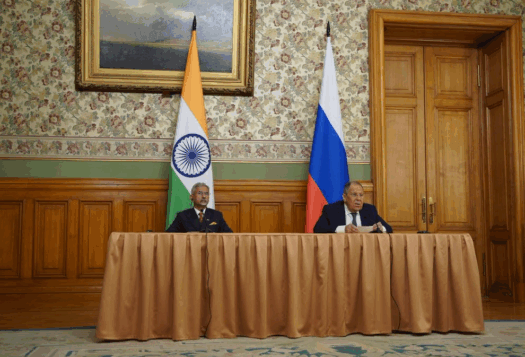
In today’s digital age, the internet can function as a great equalizer, helping developing nations achieve their economic goals. On this count, Pakistan is struggling with unstable connectivity and uneven access—particularly in rural and remote regions. Mobile broadband accounts for approximately 99 percent of existing internet connections, with fixed broadband penetration stagnating below 1 percent. This stark disparity has left many Pakistanis disconnected from the global digital economy, hindering educational opportunities, limiting healthcare access, and curtailing entrepreneurial potential. Elon Musk’s ambitious satellite internet service Starlink, which is under consideration by Pakistani authorities, could herald a transformative era in digital connectivity, bridging Pakistan’s longstanding digital divides and carrying profound economic, social, and cultural implications. But regulatory issues, geopolitical tussles, and access concerns spell formidable challenges.
Transformative Potential
The enhanced internet connectivity enabled by Starlink could significantly uplift critical sectors of Pakistani society and economy, including education, freelance work, and healthcare. Digital learning platforms like Taleemabad, whose weekly broadcast reaches over 10 million students nationwide, have demonstrated impact: children using the platform outpace their peers on learning outcomes by one-and-a-half years. Similarly, an initiative under the Federal Directorate of Education (FDE) has established over 400 smart classrooms and rolled out AI and computer classes in 150 public schools, with new digital textbooks launched for grades 1 through 5. However, these efforts remain constrained by unreliable connectivity, particularly in rural and low-income areas, limiting their potential scale and impact.
Pakistan’s freelance sector, which includes over 1.5 million professionals and ranks 4th globally in freelance earnings, also stands to benefit substantially. Many freelancers operating outside major cities struggle with unstable internet and high latency, reducing their productivity and impeding their ability to meet the standards of international clients. Reliable, high-speed connectivity from Starlink could dramatically improve their competitiveness, opening new avenues for remote work, enhancing Pakistan’s IT export potential, and generating employment opportunities in digitally excluded communities.
“The enhanced internet connectivity enabled by Starlink could significantly uplift critical sectors of Pakistani society and economy, including education, freelance work, and healthcare.”
In the healthcare sector, Starlink’s potential rollout could dramatically enhance telemedicine services. Pakistan’s doctor-to-patient ratio currently stands at approximately 1 to 1,300, short of the 1 to 1,000 ratio recommended by the World Health Organization. This shortage is more acute in rural areas, where healthcare professionals are often reluctant to serve due to poor working conditions and a lack of incentives. Digital platforms like Sehat Kahani, which has served more than 1 million patients through its mobile application across the country, have been instrumental in bridging this gap. However, such services often face disruptions due to unreliable connectivity.
Regulatory Landscape
Starlink offers a potential solution to these multi-sector connectivity woes by providing high-speed, low-latency internet access. Its constellation of low Earth orbit (LEO) satellites bypasses traditional infrastructure constraints, presenting a game-changing opportunity for Pakistan’s traditionally underserved communities.
While the federal minister for IT and Telecom confirmed in March of this year that Starlink’s temporary registration had been approved, Starlink still awaits the finalization of licensing approvals from the Pakistan Telecommunication Agency (PTA). This approval process involves determining pricing structures and may include reviewing how Starlink uses radio frequencies to transmit data (spectrum usage) and ensuring its satellites operate in harmony with others in orbit to avoid signal or path conflicts (satellite coordination), along with basic compliance with national Information and Communication Technologies (ICT) policies.
Accessibility Concerns
Even if Starlink clears regulatory hurdles, Pakistani observers should temper their excitement: the transformative promise of Starlink could fall flat without universal accessibility. The company’s current pricing models—ranging from PKR 35,000 (USD $123) to PKR 95,000 (USD $335) monthly, alongside substantial initial hardware costs—places it well beyond the reach of the average Pakistani household. Recent estimates place the average monthly household income in Pakistan at around PKR 82,100 (USD $294); Starlink would consume a significant portion of a household’s income each month, excluding setup costs. Without targeted interventions or subsidies, Starlink risks exacerbating existing socioeconomic disparities rather than alleviating them.
The government would have to take proactive steps to mitigate concerns about affordability. One approach could involve channeling the Universal Service Fund (USF) to subsidize hardware and subscription costs for public institutions like schools, Basic Health Units (BHUs), and telecenters in underserved regions. The government could also negotiate bulk procurement deals with Starlink to lower unit costs and distribute access through provincial departments, an approach mirrored by government-facilitated rollouts in the Philippines and Rwanda. A tiered pricing model—offering discounted rates to low-income households, students, or remote professionals—could be implemented through negotiated price bands or co-funded subsidy vouchers, supported by the USF or donor-funded digital inclusion programs. Pakistan can and should draw on international precedents—like India’s BharatNet, Chile’s rural broadband subsidies, and the sunsetted U.S. Affordable Connectivity Program, to guide such interventions.
Furthermore, in the absence of inclusive regulation, the shift to services like Starlink could entrench existing urban–rural divides. Other countries facing similar challenges, such as Indonesia and Nigeria, have responded by integrating satellite broadband into national connectivity strategies. For instance, Indonesia’s telecom operators contribute to a Universal Service Obligation Fund that supports broadband expansion to public institutions and underserved areas, including through the SATRIA-1 national satellite initiative. While Pakistan’s own Universal Service Fund plays a key role in infrastructure deployment, these models show how broader integration—linking satellite services to public access, digital equity, and localized implementation—can maximize national impact.

Geopolitical Complexities
Beyond regulatory and economic concerns, Pakistani officials considering Starlink’s approval would also have to navigate substantial geopolitical complexities. For one, Starlink’s regulatory process is unfolding within the context of warming U.S.-Pakistan bilateral relations, characterized by high-level engagements and deepening cooperation across issue areas including trade, critical minerals, and energy. While these developments may create more conducive political conditions for Starlink’s approval, Pakistani policymakers should evaluate the strategic implications of Starlink through a comprehensive national security and sovereignty framework that transcends immediate economic or diplomatic benefits.
Regional competition will also likely weigh on Pakistan’s policy deliberations. Despite India’s historical concerns about foreign technology dependency, New Delhi decided to approve Starlink operations, signaling the importance of digital infrastructure advancement. This regional precedent generates pressure on Pakistan to accelerate its own digital development to maintain technological parity, critical for attracting foreign investment.
Undoubtedly, however, Pakistan’s strategic ties with China represent the largest confounding factor as policymakers consider Starlink’s entry. Most pressingly, China’s Shanghai Spacecom has put forward a competing application for operating licenses. But more broadly, Pakistan’s regulatory calculus is complicated by existing defense infrastructure dependencies, particularly the military’s integration with China’s Beidou Navigation Satellite System across critical applications. The technical architecture of Starlink’s GPS-dependent positioning systems presents potential interoperability challenges and security considerations for defense planners operating within Chinese satellite navigation ecosystems.
China’s parallel development of satellite internet capabilities, including the Guowang constellation initiative, presents alternative technological pathways more aligned with Pakistan’s existing defense technology ecosystem. However, the longer developmental timeline of these systems creates a policy dilemma: whether to defer connectivity improvements pending the maturation of Chinese alternatives or proceed with available U.S. technology while negotiating appropriate safeguards for sovereignty.
“The extraterritorial nature of satellite systems, unlike domestically-controllable terrestrial infrastructure, introduces concerns regarding data sovereignty, traffic routing protocols, and potential surveillance vulnerabilities inherent in foreign-controlled space-based assets.”
The stakes of this policy dilemma are high—the extraterritorial nature of satellite systems, unlike domestically-controllable terrestrial infrastructure, introduces concerns regarding data sovereignty, traffic routing protocols, and potential surveillance vulnerabilities inherent in foreign-controlled space-based assets. The operational performance of Starlink during the Russia-Ukraine conflict provides empirical evidence of satellite internet’s strategic utility in conflict scenarios, demonstrating resilience against infrastructure disruption and maintenance of critical communications when terrestrial networks are compromised. However, this same capability presents dual-use concerns for Pakistani defense planners, as centralized control mechanisms enable external actors to influence access during periods of geopolitical tension. Musk’s order to halt Starlink access as Ukraine retook territory from Russia demonstrates that such fears are not unfounded.
The optimal policy framework to address these varied geopolitical concerns may involve segmented regulatory approval, permitting Starlink deployment for civilian connectivity applications while maintaining security-sensitive communications within Chinese or domestically-controlled alternatives. This approach would require sophisticated regulatory architecture to ensure proper technological segregation and prevent system interference, while providing strategic flexibility and reducing single-provider dependency. Pakistan’s regulatory determination regarding Starlink will establish precedential frameworks for future foreign technology partnerships and define the country’s approach to navigating technological competition within the broader U.S.-China strategic rivalry.
In sum, without thoughtful regulation and inclusive policy design, the transition to satellite internet risks leaving critical governance gaps. Ensuring affordability, protecting local industry, and safeguarding national interests—including data sovereignty, regulatory autonomy, and the viability of domestic infrastructure—would have to go hand-in-hand with embracing innovation. Through strategic planning and equitable implementation, Pakistan can not only close its digital divide, but secure its digital future.
Views expressed are the author’s own and do not necessarily reflect the positions of South Asian Voices, the Stimson Center, or our supporters.
Also Read: Assessing Cyber Risks and Resilience in India and Pakistan
***
Image 1: Wikideas1 via Wikimedia Commons
Image 2: STARS via Flickr


